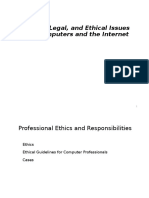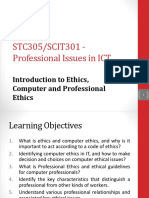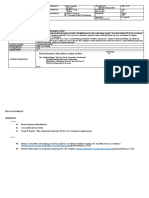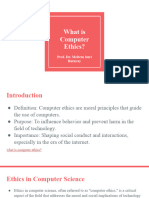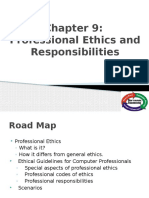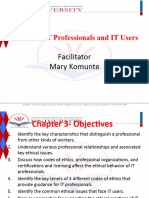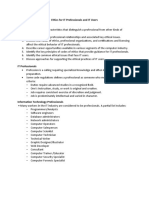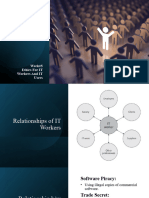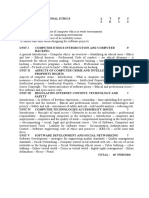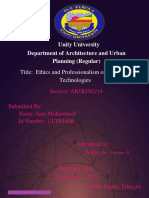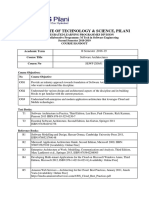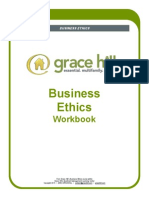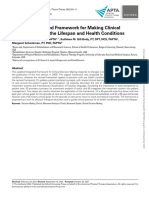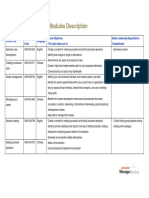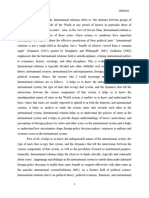0% found this document useful (0 votes)
22 views24 pagesLect 1
This document provides an overview of a Professional Practices course at Mirpur University of Science and Technology. It includes the course description, objectives, schedule, textbooks, grading policy, and an introduction to computer ethics. The key points are:
1) The course aims to familiarize students with professional practices in computer science and enable them to identify ethical conflicts and consider responsible solutions.
2) Topics include computer ethics history, ethical codes, cybercrime, team management, and characteristics of high-performance teams.
3) Assessment includes a midterm, quizzes, assignments, semester project, and final exam. Students must submit two written assignments with less than 15% plagiarism.
4)
Uploaded by
laterpater119Copyright
© © All Rights Reserved
We take content rights seriously. If you suspect this is your content, claim it here.
Available Formats
Download as PDF, TXT or read online on Scribd
0% found this document useful (0 votes)
22 views24 pagesLect 1
This document provides an overview of a Professional Practices course at Mirpur University of Science and Technology. It includes the course description, objectives, schedule, textbooks, grading policy, and an introduction to computer ethics. The key points are:
1) The course aims to familiarize students with professional practices in computer science and enable them to identify ethical conflicts and consider responsible solutions.
2) Topics include computer ethics history, ethical codes, cybercrime, team management, and characteristics of high-performance teams.
3) Assessment includes a midterm, quizzes, assignments, semester project, and final exam. Students must submit two written assignments with less than 15% plagiarism.
4)
Uploaded by
laterpater119Copyright
© © All Rights Reserved
We take content rights seriously. If you suspect this is your content, claim it here.
Available Formats
Download as PDF, TXT or read online on Scribd
/ 24






